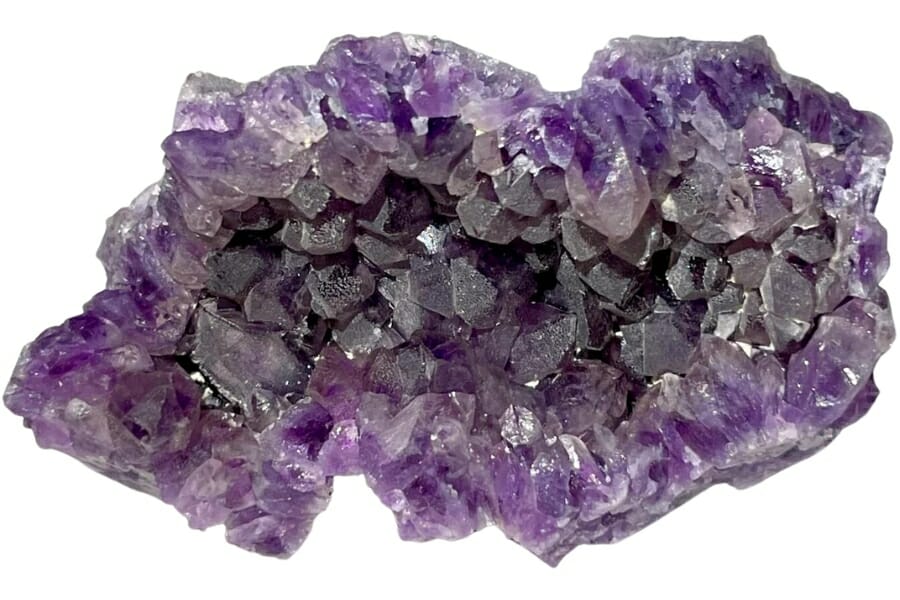Amethyst is a gorgeous purple gem that a lot of people love. But it can be hard to tell if an amethyst is real or a clever fake. To ensure you’re getting something valuable, you need to know how to spot a real amethyst.
There are a few simple ways to get this done. You can look at its color, look at it in the light, or test how hard it is. Real amethysts have a unique color, and when you look at them from different angles, you can see shades of purple.
Also, they are tougher than glass. Anyone can learn to spot a fake amethyst by using simple tools and paying close attention. At the end of this article, you’ll confidently determine a real amethyst from a fake one.
Understanding Natural Amethyst And Why Fakes Are Common
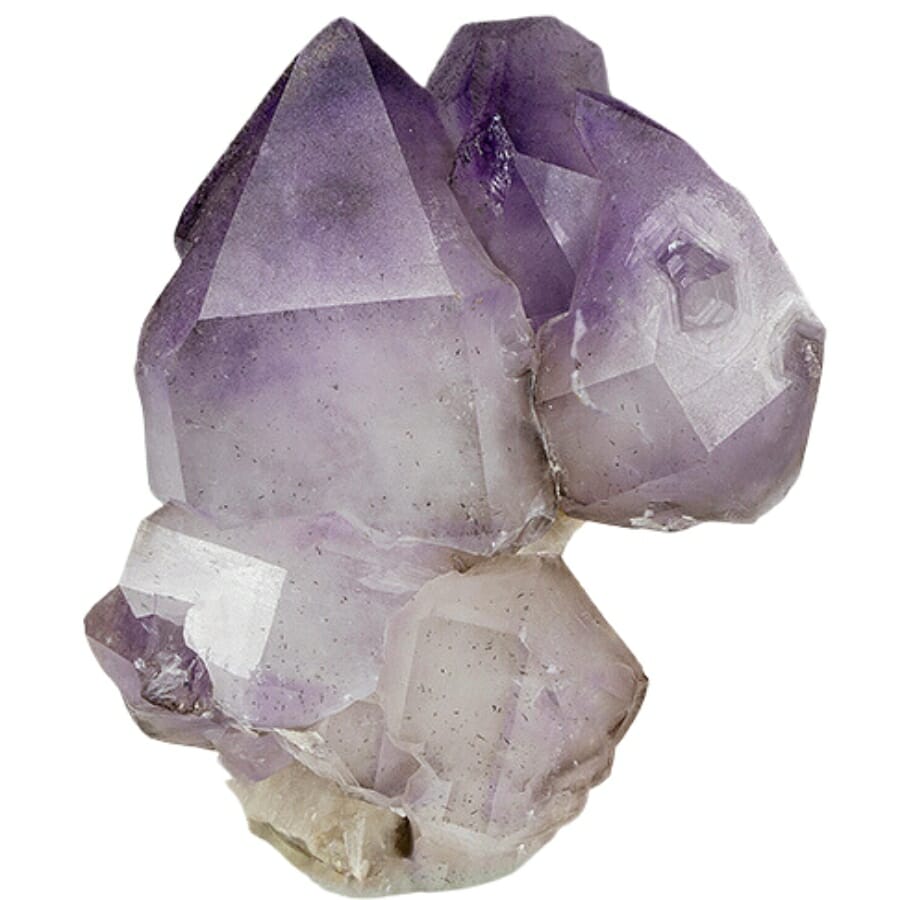
Amethyst is a type of quartz, which is a mineral made of silicon dioxide. Small amounts of iron and other metals give it its beautiful purple color. When radiation from the earth hits these minerals, it makes the beautiful color we love.
Magma, molten rock, cools and hardens over millions of years to make this happen deep inside the earth.
This gem isn’t just pretty to look at. It is also pretty hard, with a 7 on the Mohs Hardness Scale, which ranks minerals from 1 to 10 in terms of their hardness. This makes amethyst strong and good for many different uses.
It’s often cut into beautiful shapes and set into jewelry like rings, necklaces, and earrings. People also like to use amethyst to decorate their homes by putting its beautiful crystal formations around the room.
The long history of amethyst is another interesting thing about it. Many people in the past thought it had special powers, like keeping your mind clear. Some even thought it could keep poison away!
Today, the value of amethysts has gone higher for many reasons. It’s not only a birthstone for February babies, but many folks appreciate its beauty, history, and the craftsmanship needed to turn raw amethyst into a stunning piece of jewelry.
Some people are even willing to pay a high price for a particularly beautiful or unique piece of amethyst, making it a treasure among gemstone enthusiasts.
Why you’re seeing more fake amethyst these days
Most fake amethysts exist on the market because real amethysts are so popular and sought after. Everyone loves their beautiful purple color and unique features.
But real amethysts can cost a lot. So, some people try to make money by making fake amethysts that look like real ones but cost much less. They usually treat colored glass or other materials in ways that make them look like real amethysts.
Then, these fakes are sold to people who don’t know any better and think they are getting the real thing. Also, better technology and techniques have made it easier to make fake amethyst that look real, so there are more fake stones on the market.
To make it easier for you to locate real amethysts, we’ve created a guide on where to find amethyst so you can be successful.
How To Identify Real Amethyst
With its pretty purple color, amethyst is not only a beautiful gem to look at but also a high value that makes it a prized possession. But the market is full of fake amethysts meant to trick people who don’t know any better.
We understand it’s hard to identify your rocks and we’re here to help! You can find rock and mineral guides for each state there to see if you can find the rock you have.
Learning how to tell a fake amethyst from a real one based on its color, hardness, and other unique qualities is an empowering experience that will help you appreciate this precious gemstone’s true beauty and value.
Look for different shades of color
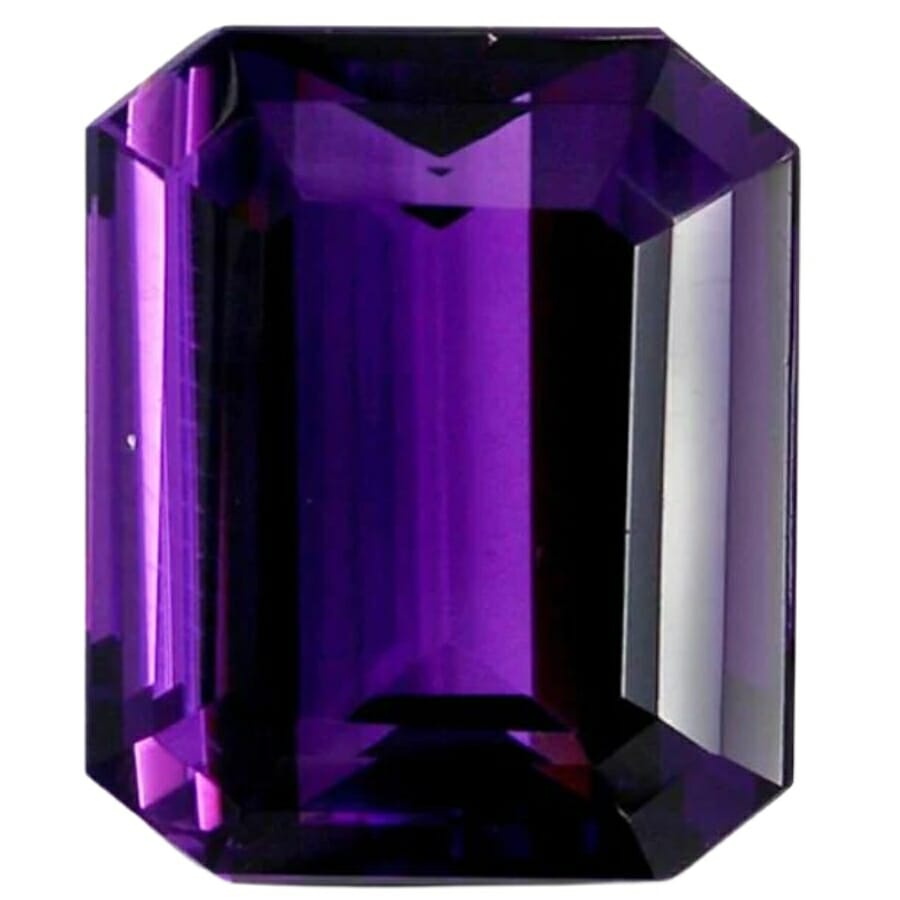
A fun way to see if an amethyst is real is to look at its different shades of color. When you turn a real amethyst, you can see shades of purple and sometimes even red or blue flashes.
Holding the amethyst, tilt and turn it gently in different directions. Watch how the color changes as you do this. Amethysts that are real should have different shades of purple and maybe some red or blue flashes.
Compare the colors if you have another amethyst or a picture of a real one. Check to see if the stone you’re testing has a similar range of colors and shades.
You can also use a magnifying glass to look at the amethyst in more detail. Look for color zoning, which is where the intensity of the color changes in different places. If you see some color zoning, that’s a good sign.
Through these simple steps, you’ll become a detective, spotting the real amethyst from a fake one by its beautiful color variations!
Examine it under the light
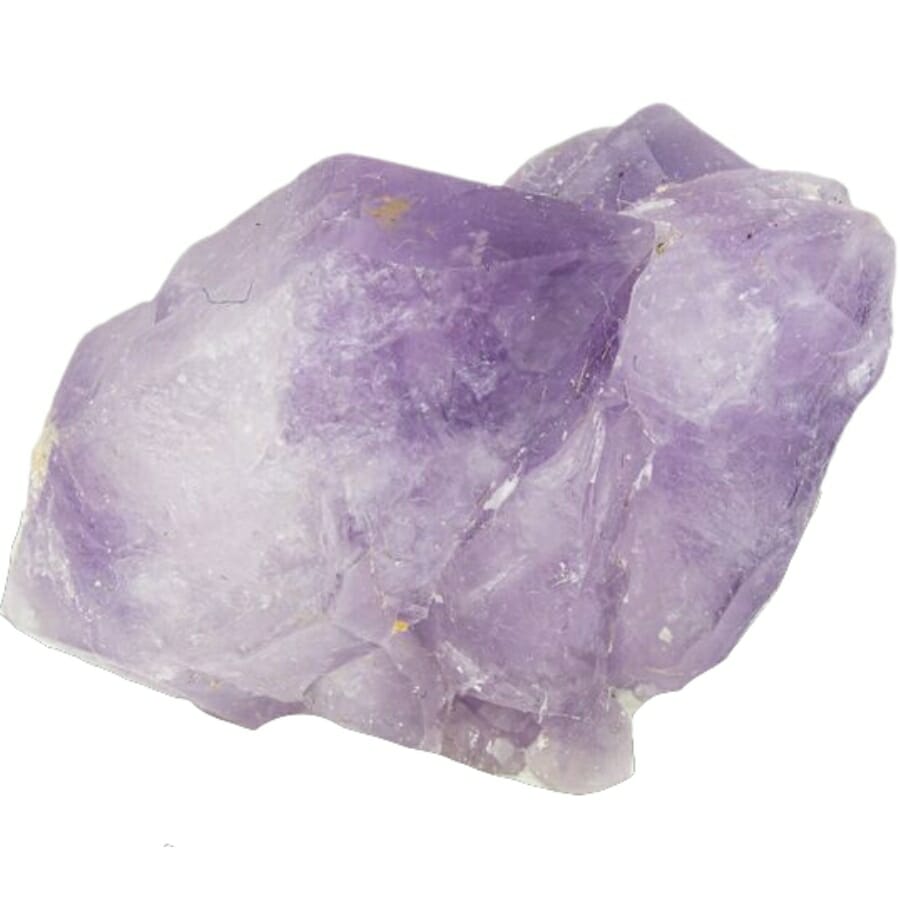
A cool way to tell if an amethyst is real is to look at it under a light. The light helps show off the amethyst’s unique colors and shapes.
Take the amethyst out into the sun or put it near a window that lets in light. Look for changes in color as you turn the stone. Real amethysts should have different shades of purple, from dark to light.
You can put the amethyst before a lamp or other artificial light source to see how it looks. Under different lighting, a real amethyst might show different shades or even a slight change in color.
Look through the amethyst with a flashlight. If it’s real, light should be able to pass through it and show a beautiful range of purple colors. When you look at a real amethyst, you may sometimes see red or blue flashes.
Use a magnifying glass and light to closely examine the amethyst. Look for natural inclusions, which are tiny flaws, and different shades of color. These are signs that the amethyst is real.
By looking at an amethyst under a light, you can play detective and see if you’re holding a real gem. It’s fun and teaches you something!
Test its hardness
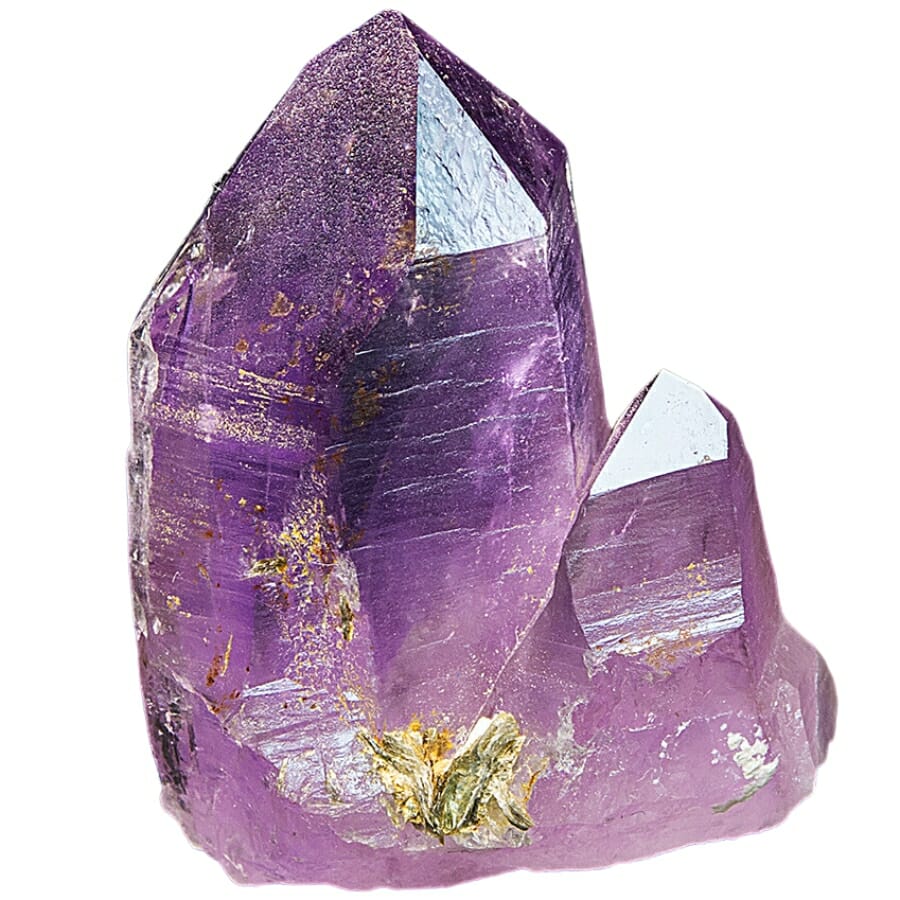
Testing an amethyst’s hardness is a great way to ensure it’s real since real amethyst is hard and doesn’t scratch easily.
Find some common things that you know are hard, like a nail made of steel or a plate made of glass. Use these things to scratch the amethyst gently. Amethyst is quite hard, so it shouldn’t be easy to scratch.
If you have other gemstones, try lightly scratching them against each other to see how hard they are compared to the amethyst. The amethyst should be at least as hard as real quartz, if not harder.
On the Mohs scale, minerals are ranked by how hard they are. Amethyst has a Mohs hardness of 7, meaning it can scratch steel and glass, but minerals like diamonds can. You can use a Mohs hardness kit, but be careful because it can damage the stone.
Check to see if the amethyst has any scratches. If it has a lot of scratches, it might not be amethyst but a softer mineral or glass. Amethyst is pretty hard, but it can chip at the edges if you drop it. Look at the edges of the amethyst to see if there are any chips. This can give you an idea of how hard it is.
Remember to be gentle when performing hardness tests, as you don’t want to damage your amethyst or other gemstones.
Check for transparency
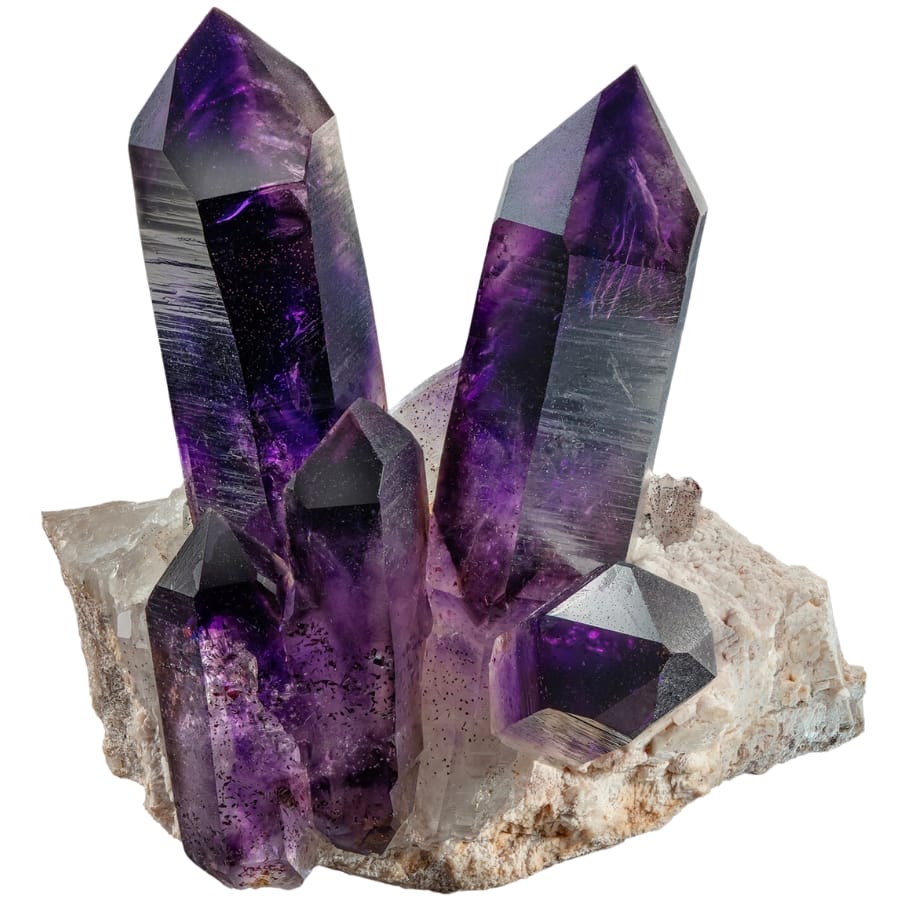
Checking an amethyst’s transparency is an exciting way to determine if it’s real. Real amethysts are clear and let light pass through, but they still have a deep purple color.
Shine a flashlight through the amethyst. The light should pass through, and the stone should glow with a rich purple color, showing its clear transparency.
If you have other clear stones or known amethysts, hold them up to the light and compare how clear they are. Real amethyst should be as clear as other real quartz stones.
Look at the amethyst more closely with a magnifying glass to see its clarity. Look for any spots that are cloudy or have flaws. Real amethysts are usually very clear but might have some natural spots.
Fake amethysts are sometimes covered with something to make them look real. Check the surface to make sure there isn’t a coating that makes it look like it’s clear when it’s not.
Exploring the transparency of amethyst helps verify its authenticity and allows you to appreciate the natural beauty of this gemstone!
Weigh your amethyst specimen
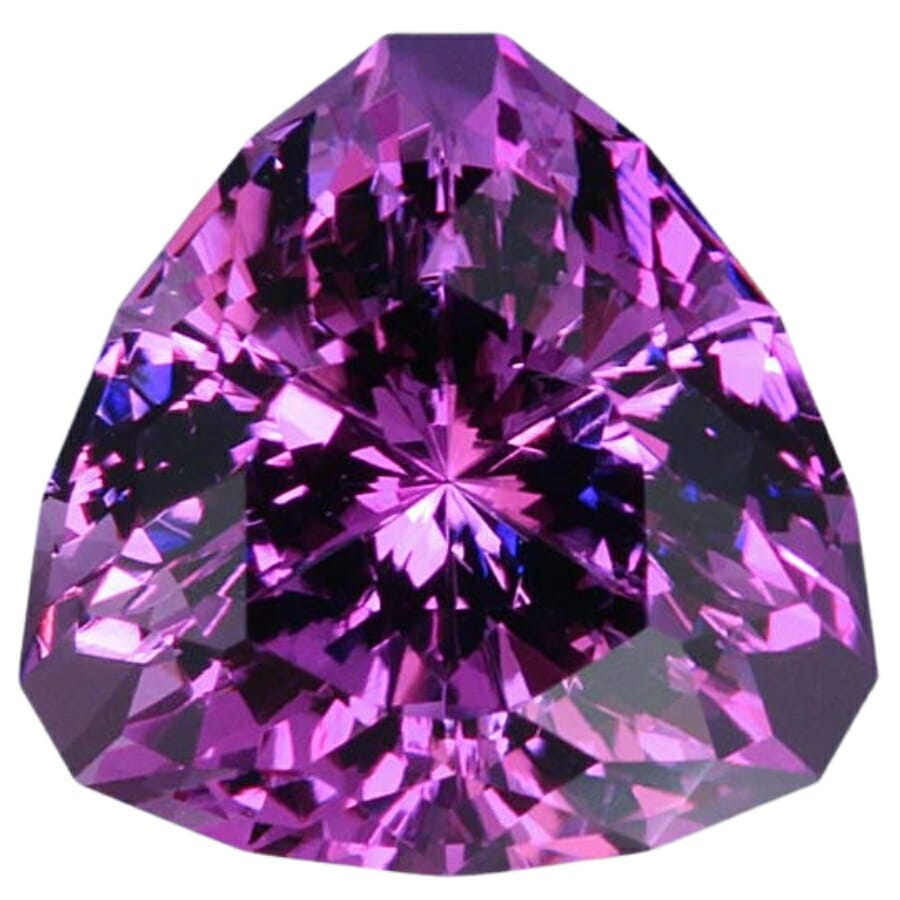
One way to tell if an amethyst is real is to weigh it since different things have different weights. Real amethysts have a weight that is similar to the weight of other stones.
Find a digital scale that is accurate and can measure in either grams or carats. To get the right measurement, it’s important that the scale is correct.
Ensure your amethyst is clean and free of any dirt or oils that could make it heavier or lighter. The problem should be fixed with a gentle rinse and dry.
Put the amethyst on a scale and make a note of how much it weighs. To get a correct reading, make sure the scale is on a flat, stable surface.
Use a ruler or a caliper to figure out how big your amethyst is. Then look at the size and how much it weighs. Real amethysts have a certain density, which means that for their size, they weigh a certain amount.
The density of real amethyst is about 2.65 grams per cubic centimeter. You can look up the typical weights for amethysts of different sizes and compare them with what you have.
If you weigh an amethyst and compare it to other stones of the same size and weight, you can get a good idea of whether it’s real.
The Different Types Of Fake Amethyst And What They Look Like
Some fake amethysts can trick people because they look close to the real thing. They can be made from colored glass, purple cubic zirconia, synthetic materials, or other kinds of purple stones, each having its unique look but lacking the natural beauty and features of a genuine amethyst.
We’ll list these types so you can have a good idea of what to watch out for when looking for a real amethyst.
Colored Glass
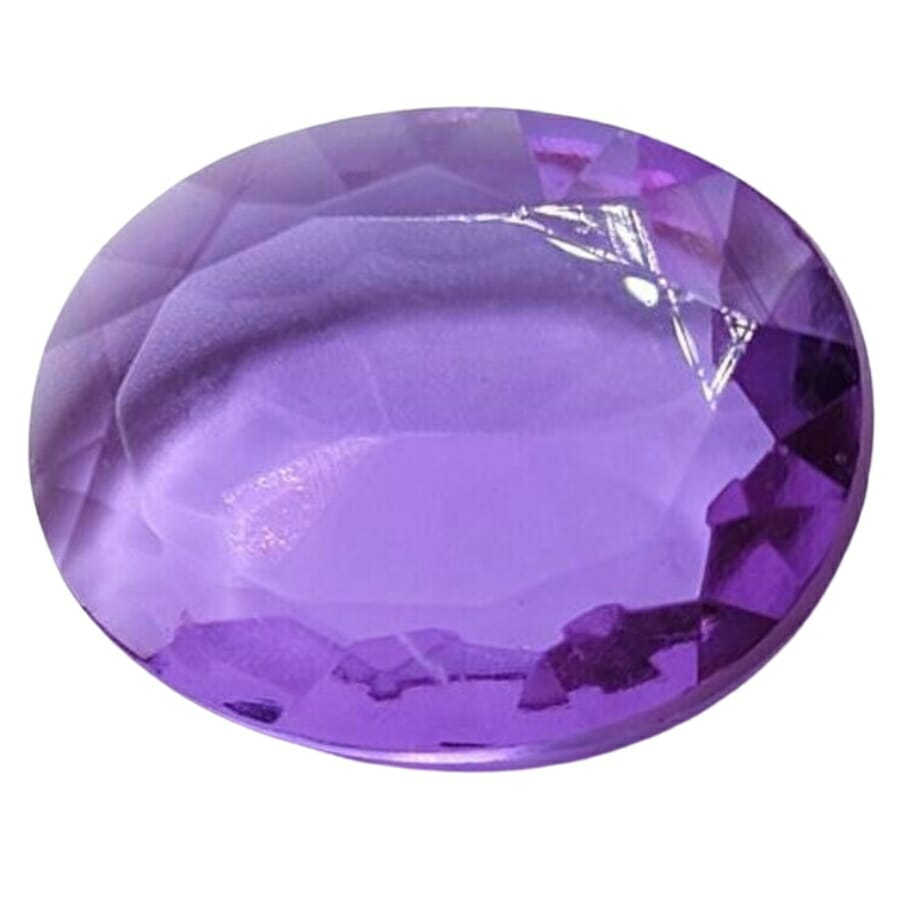
It takes a lot of skill to make colored glass look like amethyst. First, clear glass is made by melting sand, soda, and lime, among other minerals, at very high temperatures until they all mix.
Some “coloring agents” are added to the glass to make it look like amethyst. Additives like manganese or iron oxide give it a purple color like amethyst.
After adding the color, the glass is cooled and starts to harden. Then it can be cut and shaped like an amethyst gemstone. Like natural amethyst, these fakes can be cut into many different shapes, and sometimes it’s hard to tell them apart just by looking.
The colored glass is polished to make it look shiny and lovely. Now, even though it’s not real, it’s ready to be sold as amethyst. It’s cheaper than genuine amethyst, so people might use it in jewelry or decorations.
Colored glass, on the other hand, doesn’t have the same natural beauty, value, or cool inner features as real amethyst.
How you can identify “colored glass” being sold as real amethyst
Color uniformity
Real amethysts have different shades of purple in the same stone, but colored glass usually has the same color throughout. You might be able to spot fake amethyst made from glass by looking closely at the color and looking for any color zoning or changes.
Do a scratch test
Real amethyst is hard and doesn’t scratch easily, but colored glass is softer. Scratching a stone’s surface with a steel file or a piece of glass is one way to test it. If it scratches, it’s probably made of colored glass.
Test the temperature
Real amethysts will stay cool when you touch them, while colored glass will quickly get hot when you hold it. By holding the stone in your hand for a few seconds, you can see if it warms up or stays cool. This could help you determine if it’s colored glass or real amethyst.
Purple Cubic Zirconia
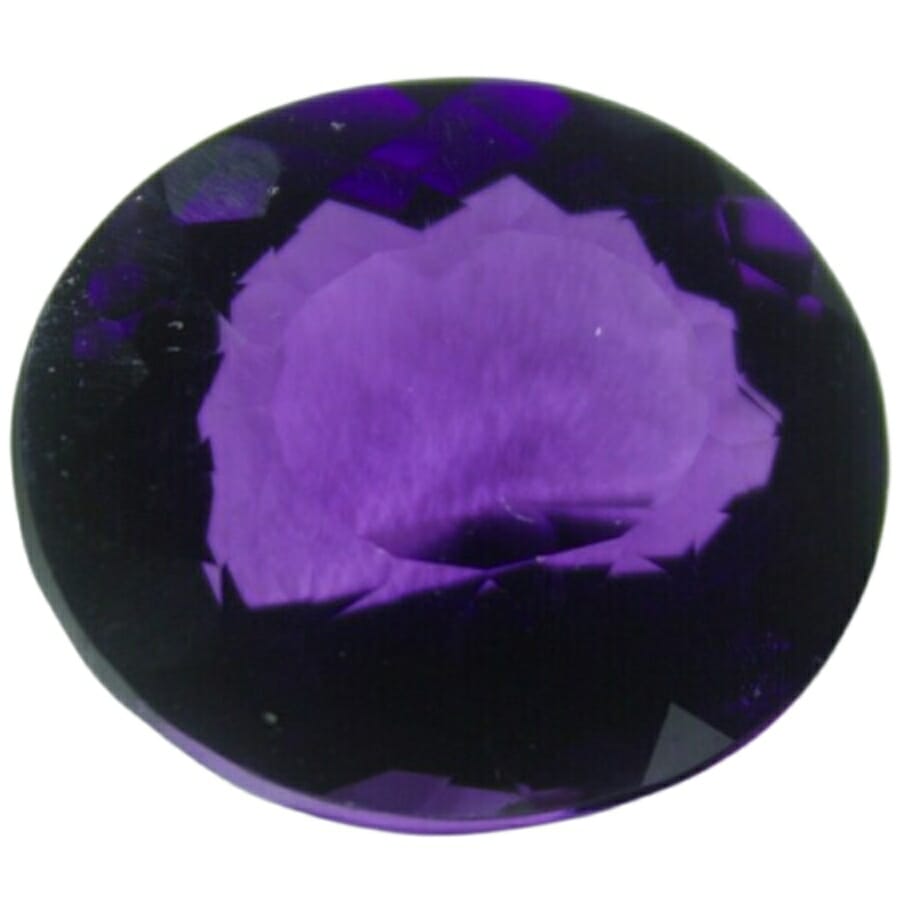
Making purple cubic zirconia is interesting because it uses both science and art. Cubic zirconia is made by melting zirconium oxide powder with other minerals at very high temperatures, around 5000 degrees Fahrenheit.
During the melting process, a bit of purple color is added to make it look like amethyst. Once everything is melted and mixed together, the liquid is cooled and starts to harden into a big crystal.
The crystal is then cut into smaller pieces that can be shaped and polished to look like amethyst gemstones. The way they are cut and polished makes them shine and sparkle like real gemstones.
Purple cubic zirconia can be made into jewelry and sold as amethyst because it looks a lot like amethyst, especially when it’s shiny and new. Some people like it because it costs a lot less than real amethyst.
But it’s not as beautiful or valuable as a real amethyst, and over time it can get scratched and lose its shine, which doesn’t happen with real amethyst.
How you can identify “purple cubic zirconia” being sold as real amethyst
Perform a density test
Amethyst is less dense than cubic zirconia. You can compare the size and weight of the stone if you have a scale. It might be cubic zirconia if it is heavier than a real amethyst of the same size.
Do a hardness test
Both cubic zirconia and amethyst are hard, but cubic zirconia is even harder. You could use a known-hardness material to do a scratch test.
If the stone is harder than it should be for an amethyst, it could be cubic zirconia. Remember that doing a scratch test can hurt the stone, so it’s best to proceed with caution.
Check the sparkle
Real amethyst sparkles in a different way than purple cubic zirconia. When you shine a light on it, it tends to sparkle with more colors, while real amethysts sparkle in a deeper, more subdued way.
Purple Fluorite
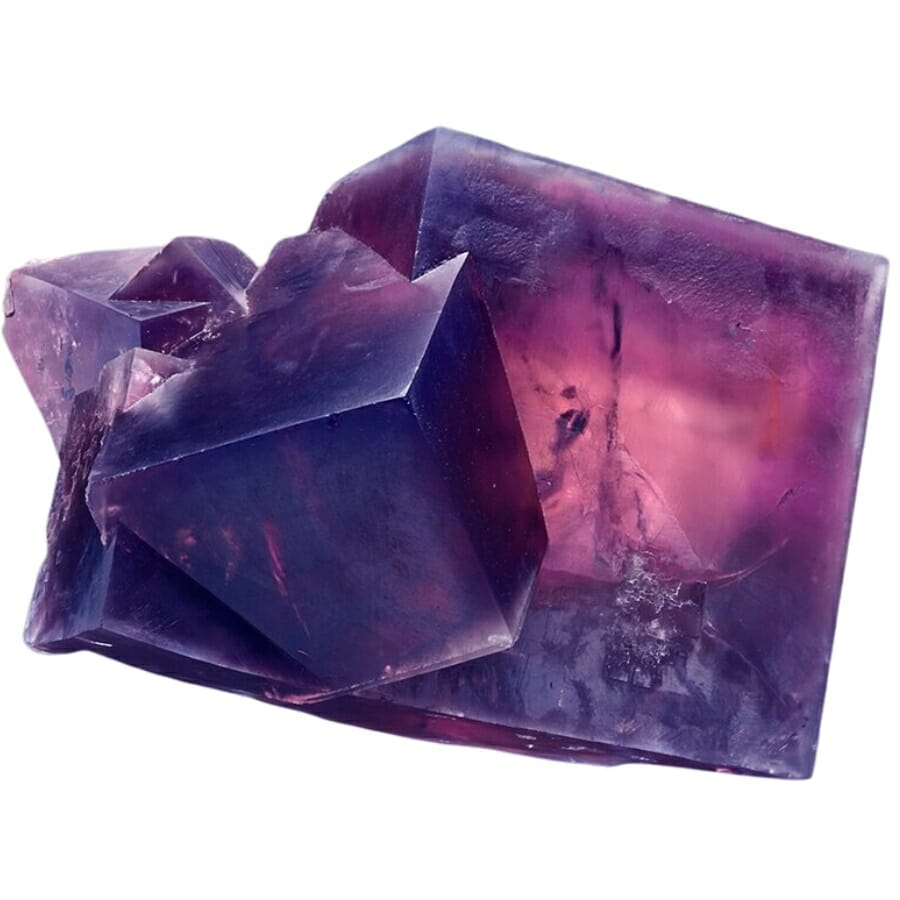
Both amethyst and purple fluorite are natural minerals, but they are very different. Under the ground, fluorite is made when minerals in water seep into cracks in rocks and slowly harden over a long period of time.
Fluorite can be in many colors, including purple. Sometimes, because it is purple, it looks a lot like amethyst. Some people might try to sell purple fluorite as amethyst, which is usually a more valuable stone.
They might cut and polish the purple fluorite until it looks like an amethyst gemstone. They can make it into jewelry or sell it as loose stones, saying it’s amethyst to get a higher price.
But there are ways to figure out which is which. For example, fluorite is easier to scratch than amethyst because it is softer. Also, purple fluorite might not be the same color as real amethyst, a deep, rich purple.
Fluorite sometimes has bands of colors other than purple, which is a good sign that it isn’t real amethyst. So, purple fluorite might fool some people, but you can tell if it’s real amethyst with a good look and maybe the help of a gem expert.
How you can identify “purple fluorite” being sold as real amethyst
Check its clarity
Amethyst usually has better clarity than purple fluorite, meaning it is clearer and has fewer tiny flaws or inclusions. You can tell if the stone is purple fluorite or real amethyst by holding it up to the light and looking at how clear it is and how many things are in it.
Observe the color difference
Compared to the deep purple of real amethyst, purple fluorite may look more blue or gray. You might be able to tell the difference by comparing the color of your stone to that of a real amethyst.
Do a scratch test
Real amethyst is much harder than purple fluorite. If you scratch the stone easily with a steel file or a piece of glass, it’s probably purple fluorite and not amethyst. Remember that a scratch test can hurt the stone, so be careful when you do it.
Purple Quartz
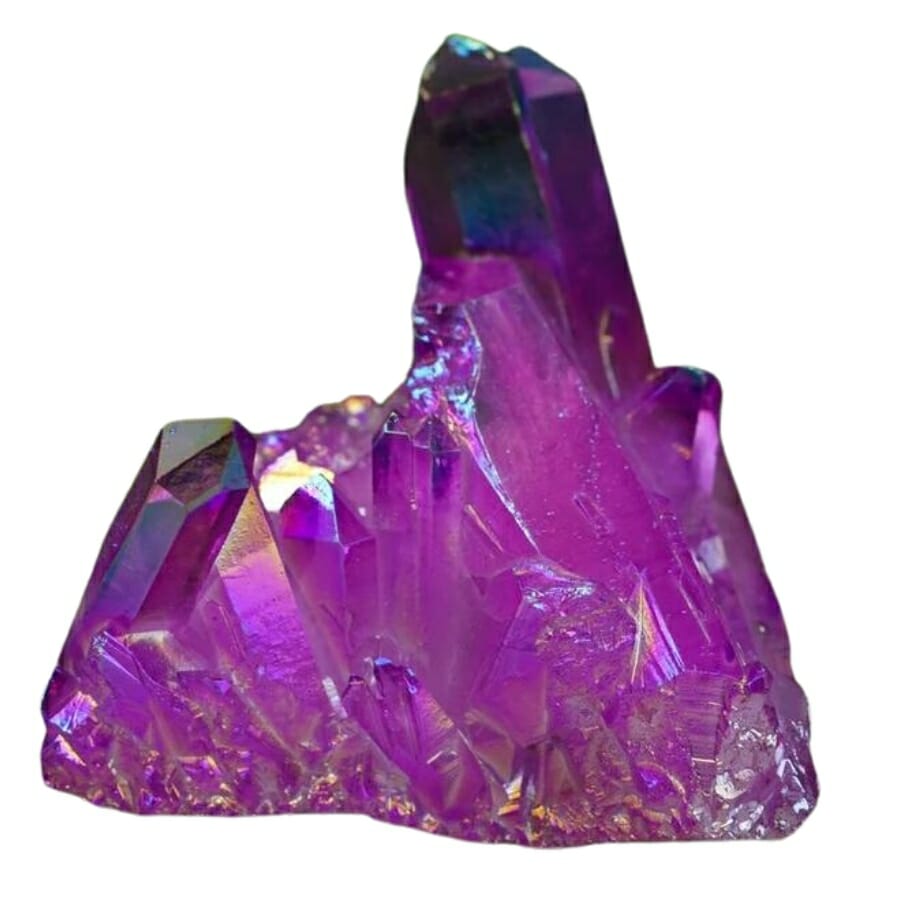
Even though purple quartz and amethyst are made of quartz, they are not the same. Real amethyst is a quartz type with iron and other minerals that make it naturally purple. But not all purple quartz is made by nature.
Some are made by heating clear or lightly colored quartz to high temperatures to make it purple. Once the quartz turns purple, it might be sold as amethyst because it looks much like it.
This purple quartz can be cut, shaped, and polished like an amethyst, making it even harder for someone who isn’t an expert to tell them apart. People made these purple quartz stones.
They could be made into jewelry, used as decorations, or sold as loose stones. Most of the time, they are much cheaper than real amethysts but don’t have the same value or unique qualities.
Real amethyst keeps its beautiful color, while the color of man-made purple quartz may fade over time or change if it is exposed to sunlight or heat.
Knowing the difference between real amethyst and purple quartz made in a lab helps buyers make smart choices and see the true beauty of real amethyst.
How you can identify “purple quartz” being sold as real amethyst
Check for dyed surfaces
Amethyst may have been dyed to look like purple quartz. Look for cracks or scratches on the stone to see if it has been colored. It might be dyed quartz if the color is only on the outside and not all the way through.
Examine the colors
Compared to the rich and varied colors of a real amethyst, purple quartz can have colors that look a little off, like too pale or too uniform. You may see differences if you look at pictures or real amethyst stones that are the same color as your stone.
Inspect inclusions
Real amethyst often has unique natural inclusions or small flaws that can be seen closely. If your stone doesn’t have these natural features and looks too perfect or uniform, it might not be an amethyst. Instead, it might be a piece of purple quartz.
Synthetic Amethyst
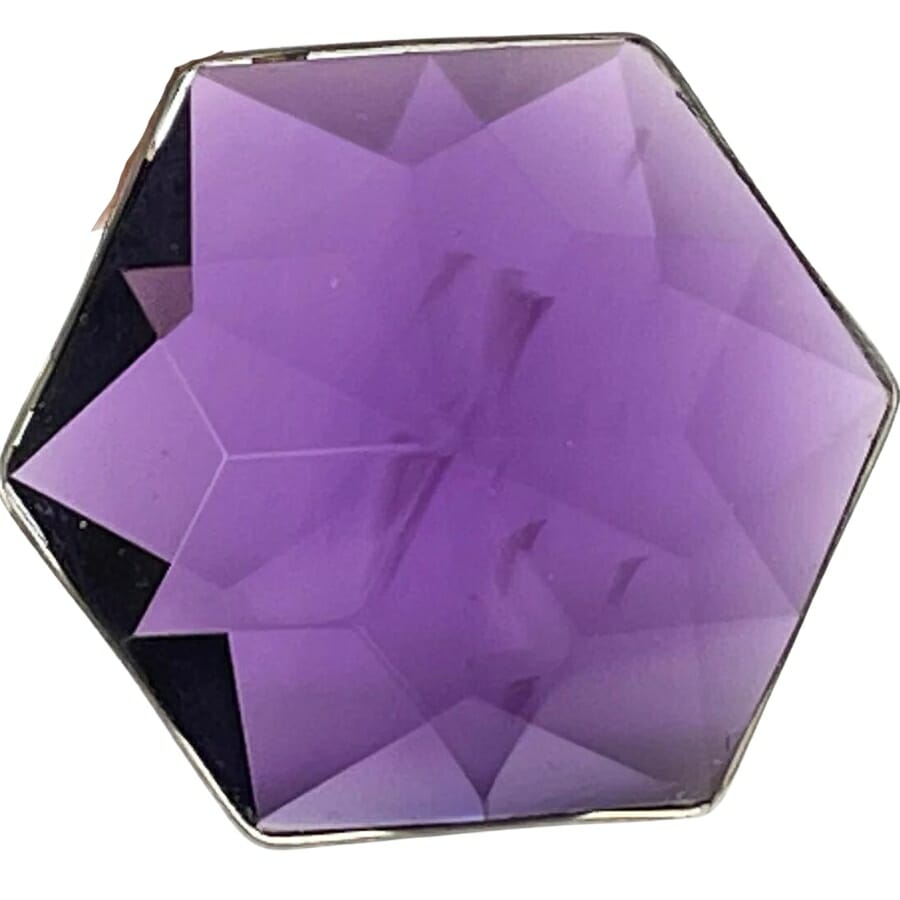
People have figured out a smart way to make something that looks like the real thing without waiting for nature to do its work. The “hydrothermal process” is what scientists use to make synthetic amethyst.
In this process, a special container that can handle really high temperatures and pressures is filled with a solution that has the same ingredients as natural amethyst. Over time, as the mixture cools, crystals that look like amethyst start to form.
Once these fake amethyst crystals are made, they are cut and polished to look like real gemstones. Like natural amethyst, they can be made into jewelry or sold as loose stones.
These fake amethysts look like real ones, and it can be hard to tell the difference between them. They are usually cheaper than genuine amethyst, which is why some people might like them better.
Real amethyst, on the other hand, has a beauty that is natural and one of a kind. It might also not feel as special because it was made in a lab instead of being formed naturally underground over a long period, like real amethyst.
How you can identify “synthetic amethyst” being sold as real amethyst
Check for bubbles
Synthetic amethysts might have tiny bubbles inside them from the manufacturing process. Real amethysts, being natural stones, won’t have these bubbles. If you see any under a magnifying glass, the amethyst might be synthetic.
Evaluate the colors
Real amethysts have different shades of purple in them. Most man-made amethysts are all the same color, unlike real ones with natural color zones. A close look at the color can help you determine if the stone is real or not.
Observe the inclusions
Real amethysts often have natural inclusions, minor flaws or pieces of other minerals. Most of the time, synthetic amethysts are perfect, have inclusions that look too perfect, or are set up in a pattern. Looking closely at the inclusions, you can tell if the amethyst is real or fake.
How To Tell If Amethyst Is Real Vs Fake
You can tell a real amethyst from a fake one by looking at its characteristics. By looking at these things and, in some cases, getting help from a professional, you can be sure that your gem is real and enjoy the true beauty and value of real amethyst.
How To Identify Fake Amethyst When It’s Cut Or Polished
When the stone is cut and polished, distinguishing real amethyst from fake becomes a blend of art and science, relying on certain identifiable traits. By looking at the stone’s color, clarity, weight, temperature to the touch, hardness, and how light interacts, you can learn to spot real amethyst and avoid fakes.
Color depth
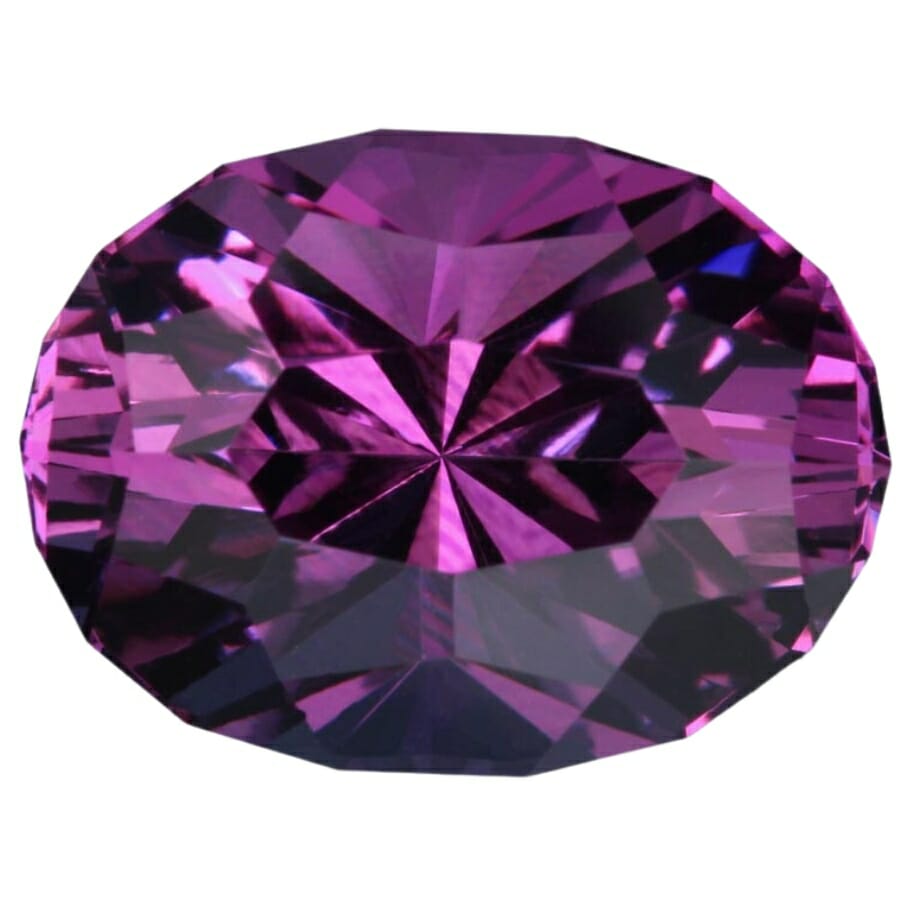
Amethyst is known for its purple color, ranging from a light lavender to a dark, intense purple. When you look at an amethyst, the depth of its color can tell you a lot about whether or not it is real.
Real amethysts have a rich, consistent color, but not too perfect. They may have color zoning, which means different shades of purple in different places, and sometimes red or blue flashes when the light hits them.
On the other hand, fake amethysts might have a flat or too bright purple color that doesn’t change much when you move it under light. They might also have colors that are too even or don’t have any changes.
The color may even look like it was painted on, or there may be bubbles inside the stone that aren’t real amethysts.
If you want to check a stone, clean it first so that dirt or oils don’t trick you. Hold it up to a light and slowly turn it when it’s clean. Look at how the color changes and how deep the purple is.
Real amethyst has beautiful and complex color depth, which makes it a joy to look at. Fake amethyst, on the other hand, lacks this richness and complexity.
Temperature to the touch
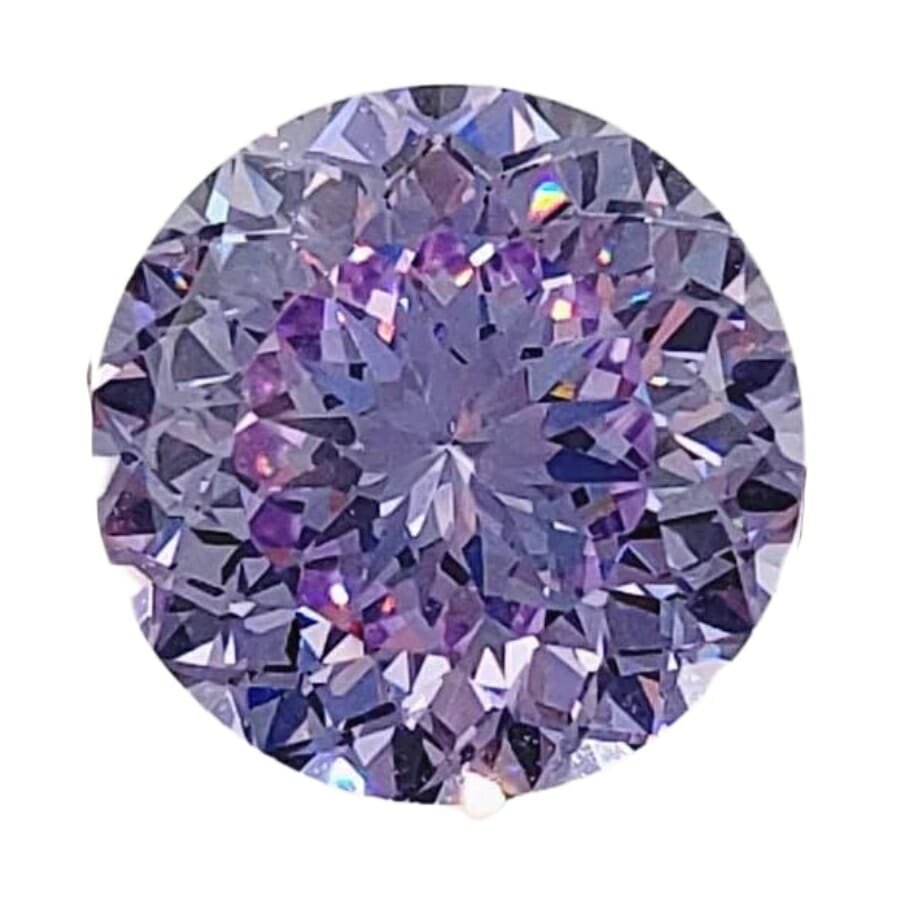
If you are trying to tell a real amethyst from a fake one, how it feels when you touch it can be very telling. Real amethyst is a natural stone, so it stays cool to the touch even on hot days. On the other hand, fake amethyst made of glass or plastic may feel warmer.
Here’s an easy way to check the temperature: First, feel the temperature of the amethyst in your hand. A real amethyst will feel cool and won’t get hot fast.
On the other hand, a fake amethyst will match your body temperature more quickly, especially if it is made of glass or plastic.
But be careful, because this isn’t a test that can’t fail. It may also be warm if the amethyst has been in the sun or a warm room. So, it’s best to do this test with the amethyst at room temperature.
Or, if you want to be sure, it’s a good idea to take the amethyst to a gemstone expert or jeweler. They have the tools and know-how to help you determine if your amethyst is real or fake.
Light interaction
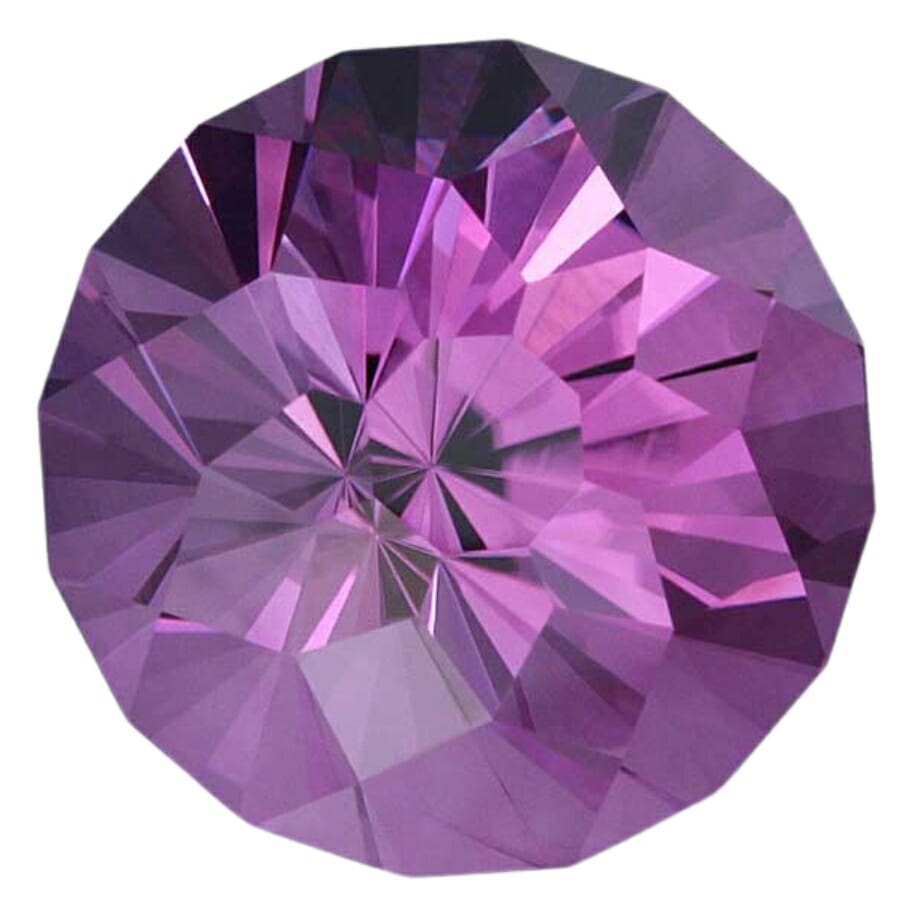
A cool way to determine if an amethyst is real is to see how it reacts to light. Because of how amethyst’s crystal structure interacts with light when light hits a real amethyst, it bounces around and scatters. This can make the stone shine beautifully and sometimes look like a rainbow.
Hold an amethyst up to a light source and slowly turn it around to check it. Watch how the light moves through the stone. Fake amethyst might let light pass through without much happening, making it look not very interesting.
Also, real amethysts don’t let much light through because their color and crystal structure are so dark. This makes them look opaque or translucent but not transparent.
On the other hand, fake amethysts made of glass or cubic zirconia may let more light through, making them look more transparent, which isn’t a characteristic of real amethyst.
Look inside the stone for reflections. Real amethysts might have flashes of red or blue, but fakes might not have these colors.
Each little test helps you become a gemstone detective who can put together clues to find out what the stone is really like. It’s fun, and each test teaches you something new about the amazing world of gemstones.
How To Identify Fake Amethyst When It’s Raw
You must pay close attention to how it looks and acts to spot fake amethyst when it’s still in its natural state. Look for natural flaws or inclusions, which are common in real amethysts. In this section, we’ll find out how to identify fake amethyst when it’s raw.
Color examination
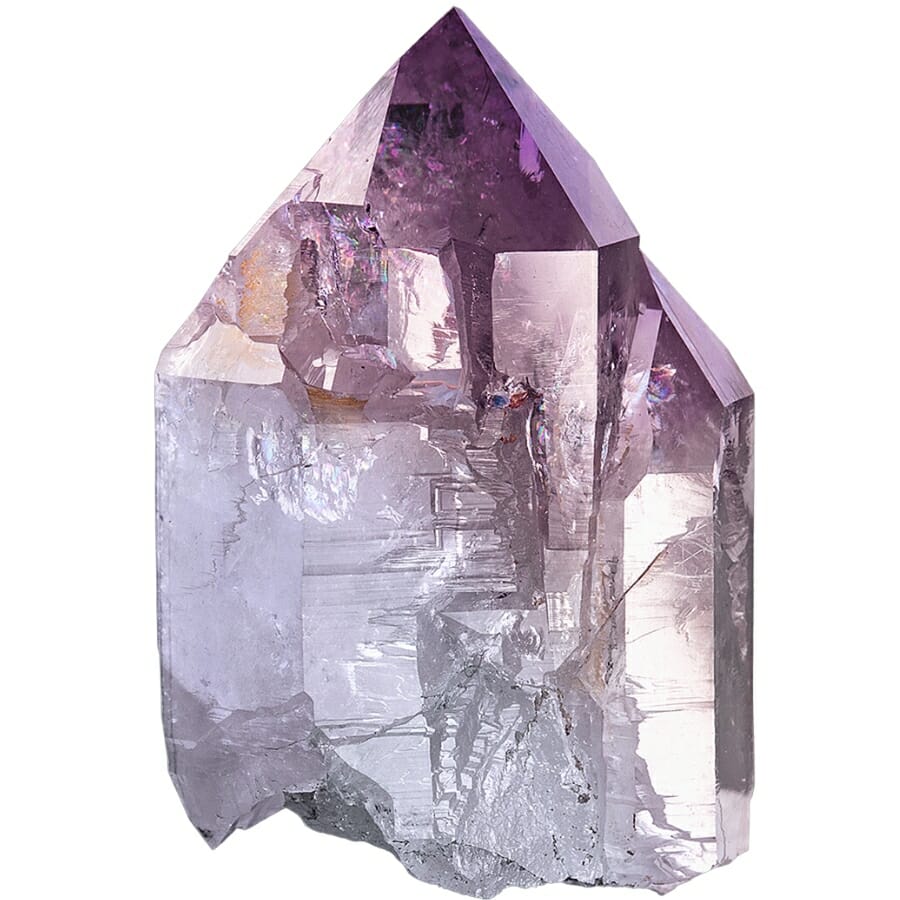
Color is a big clue when figuring out whether a raw amethyst is real or fake. A genuine amethyst has a lovely purple color ranging from a light lavender to a deep, dark purple.
Sometimes, you might notice red or blue flashes within the stone when light hits it. The color can also change slightly depending on how you look at it and how the light hits it.
This color variety within a single stone is one of the charms of real amethyst. If the color is too bright, flat, or uniform, or if it looks painted on, there’s a chance it could be a fake.
Now, if you’re looking at a fake amethyst, the color might be too perfect or too uniform, which means it looks the same no matter which way you turn it or how the light changes.
It might also look too bright and fake like it’s been painted on. Some fake amethysts may also have bubbles inside, which is a sign that they are made of glass and not real.
Watch how the color changes under the light and see if it has the depth and variety of color that real amethysts are known for. Remember that real amethysts have a rich, natural purple color that is hard to copy.
Hardness test
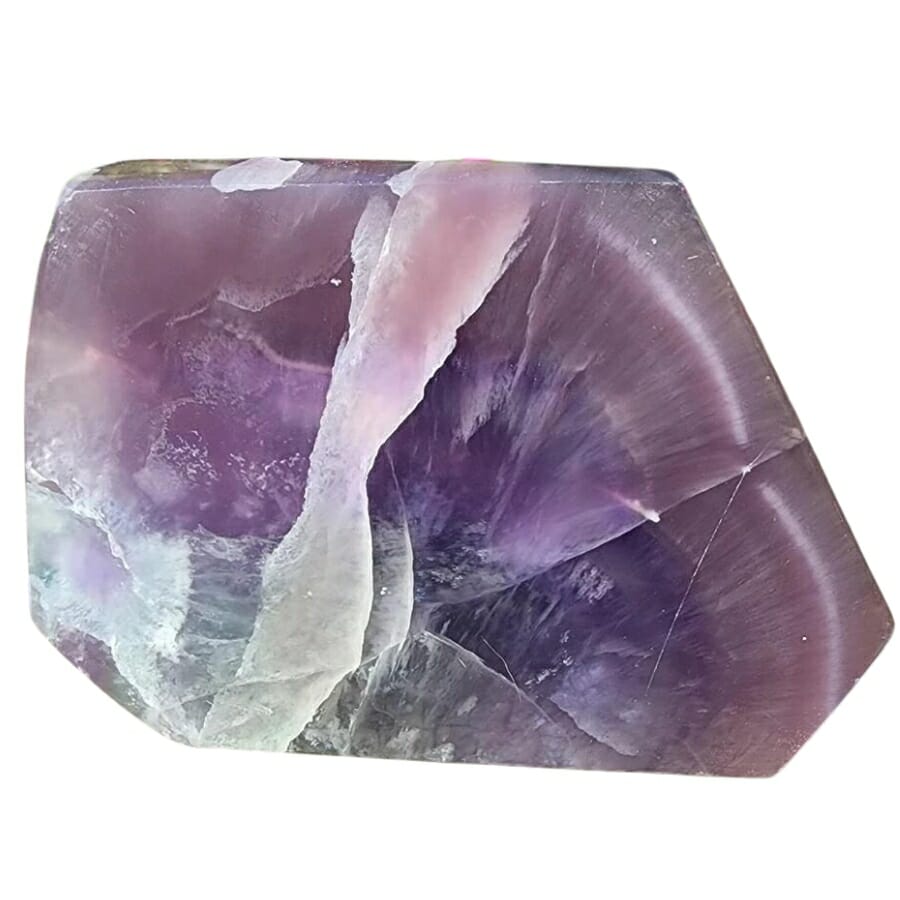
Amethyst is a relatively hard gemstone, scoring a 7 on the Mohs hardness scale, which means it can scratch glass and won’t be easily scratched by other substances. It may not be a real amethyst if the raw stone is easily scratched or can’t scratch glass.
This is because the tiny atoms in a real amethyst are tightly packed together in a strong, repeating pattern. This makes the stone hard and durable.
You could try to scratch a piece of glass gently with the raw amethyst. It’s a good sign that your amethyst is real if it leaves a scratch. But if the glass scratches your stone or if your stone can’t scratch the glass, it might be a fake or a different kind of stone.
When you do the hardness test, be careful not to damage the amethyst, especially if it turns out to be real. The test should only be used as a last resort because it might cause small damage to the amethyst.
You could also take your stone to a gemologist. They have the right tools to test the stone’s hardness without hurting it. They have a safe and professional way to help you figure out if you have a real amethyst or not.
Transparency check
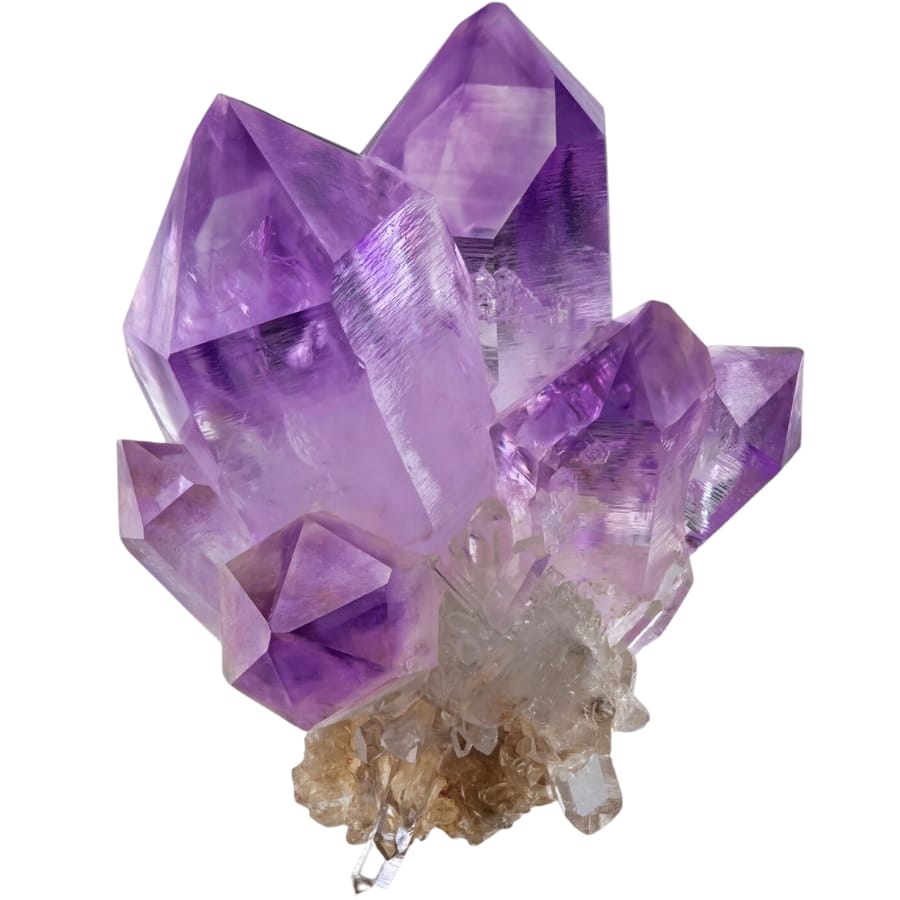
To check if a raw amethyst is clear is like playing a fun game of light and shadow. Real amethysts usually have a nice, translucent look, which means that some light can pass through them, but not all of it like it would through a clear glass window.
You only need a good light source to check transparency. You can look through your raw amethyst if you hold it to the light.
If it’s a real amethyst, you should be able to see light coming through, but it might look a little cloudy or milky. If your stone is too clear or doesn’t let any light through, it might be a fake.
When you’re looking at how clear the stone is, pay attention to the inside as well. Real amethysts often have little lines or spots where the color is darker or lighter. These are called “inclusions.”
These natural flaws give the stone character and are a good sign that you are dealing with a real piece of amethyst. But remember that fake ones might look too perfect and glassy and not have these natural features, which could be a sign that they are not real.

